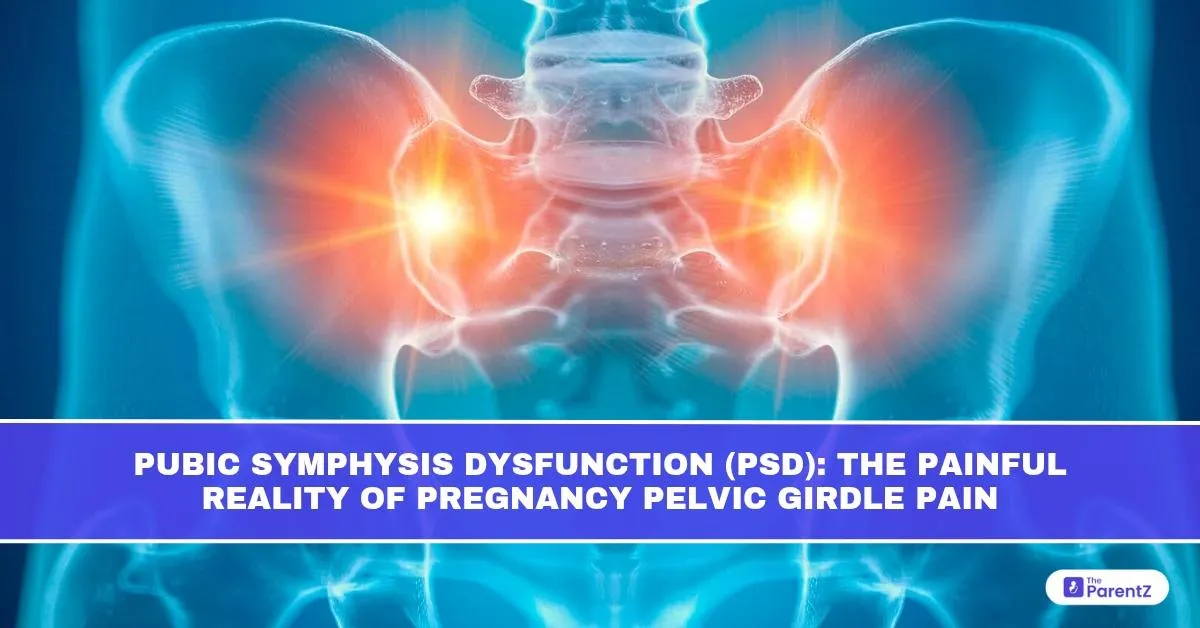When Walking Hurts: Understanding PSD
Pregnancy transforms a woman’s body in incredible ways but not all of them feel miraculous. One of the lesser-known but intensely painful experiences some women face is Pubic Symphysis Dysfunction (PSD), a condition that falls under the broader term Pelvic Girdle Pain (PGP).
You may have felt it already: a sharp, stabbing, or grinding pain in the front of your pelvis when walking, rolling in bed, or climbing stairs. It can stop you in your tracks and it’s not just “normal pregnancy pain.”
What Is Pubic Symphysis Dysfunction?
The pubic symphysis is a small joint that connects the left and right sides of your pelvis at the front, just above the genitals. During pregnancy, hormones like relaxin loosen the ligaments that support this joint to prepare your body for delivery.
But when this loosening becomes too much, too soon, or combined with uneven pelvic strain, it leads to misalignment or excessive movement at the joint, causing pain, swelling, and instability.
This is called Pubic Symphysis Dysfunction, and it’s a type of Pelvic Girdle Pain, affecting roughly 1 in 5 pregnant women, according to NHS and recent studies in the Journal of Women’s Health Physical Therapy.
Signs and Symptoms
Not every pelvic ache is PSD. But if you have any of the following, it’s worth speaking to your doctor or physiotherapist:
- Sharp or burning pain in the pubic bone, especially when walking or changing position
- A “clicking” or grinding feeling in the pelvis
- Pain that radiates to the groin, hips, inner thighs, or lower back
- Difficulty lifting one leg at a time (e.g., putting on pants, climbing stairs)
- Increased pain: The pain often worsens as the day progresses or with prolonged activity.
Why Does It Happen?
PSD is not your fault. It’s caused by a mix of mechanical, hormonal, and postural factors:
- Pregnancy hormones soften pelvic ligaments for birth preparation.
- The growing baby shifts your centre of gravity, placing extra strain on the pelvis.
- Previous pelvic injuries or poor core muscle support may contribute.
- Carrying heavy loads, uneven movements, or poor posture can worsen symptoms.
Importantly, having had PSD in one pregnancy raises the likelihood of recurrence in future pregnancies.
Diagnosis: It’s Real, Not “In Your Head”
Many women are told to “just rest” or are brushed off when they mention pelvic pain. But PSD is a recognised medical condition, and diagnosis starts with:
- Clinical evaluation of pelvic tenderness, gait, and joint mobility
- Ruling out other causes like urinary tract infections or sciatica
- In some cases, ultrasound or MRI may be used if symptoms are severe
Your doctor may refer you to a women’s health physiotherapist, which is one of the best steps toward recovery.
How Is PSD Treated?
There’s no quick fix, but relief is possible and often quite effective with proper support.
1. Pelvic Support Belt:
These specially designed belts stabilize the pelvis and reduce strain. They can provide instant relief during walking or chores.
2. Physiotherapy:
A physiotherapist trained in pregnancy care will guide you through:
- Pelvic alignment exercises
- Gentle core and glute strengthening
- Safe stretching and posture correction
- Hands-on therapy to realign the pelvis if needed
3. Activity Modification:
- Sit down to get dressed instead of standing on one leg
- Avoid heavy lifting, pushing carts, or twisting motions
- Use a pillow between knees when sleeping on your side
- Try side-stepping or backward walking to reduce discomfort
4. Warm Compress and Rest: Applying gentle heat and allowing breaks throughout the day helps reduce inflammation and tension.
5. Medication: Paracetamol (acetaminophen) may be prescribed for pain. Always consult your doctor before taking anything during pregnancy.
What About Delivery?
Most women with PSD can deliver vaginally, but it’s important to:
- Inform your obstetrician and birthing team
- Avoid positions that worsen pelvic strain, like deep squatting or legs wide apart for prolonged periods
- Consider side-lying or hands-and-knees positions for better comfort
In rare, severe cases, a planned C-section might be considered.
What Happens After Birth?
For many women, PSD symptoms reduce or resolve within weeks of delivery as hormone levels stabilize. However, lingering pain or instability can continue if left untreated.
Postpartum care may include:
- Continued pelvic physiotherapy
- Core muscle retraining
- Addressing muscle imbalances from pregnancy
Early postpartum attention greatly improves long-term recovery.
Emotional Health Matters Too
PSD can limit your mobility, independence, and confidence during pregnancy, a time when you already feel vulnerable.
It’s normal to feel frustrated, anxious, or even guilty for “slowing down.” But remember:
Rest is not a weakness. It’s recovery.
Seek help early. PSD is not your fault, and you’re not alone.
Can It Be Prevented?
Not completely but you can reduce the risk or severity by:
- Building core and pelvic strength before or early in pregnancy
- Practicing good posture and symmetrical movements
- Using proper lifting techniques
- Avoiding prolonged standing or single-leg weight bearing
If you’ve had PSD before, start physiotherapy as soon as pregnancy is confirmed.
Final Words: Trust Your Pain
PSD may not be visible like a swollen belly or stretch marks but it’s real, valid, and deserving of care. By understanding what’s happening inside your body and getting the right support, you can move through pregnancy with more comfort, control, and confidence. Don’t ignore pelvic pain. Listen to it and let it guide you toward healing.








Be the first one to comment on this story.